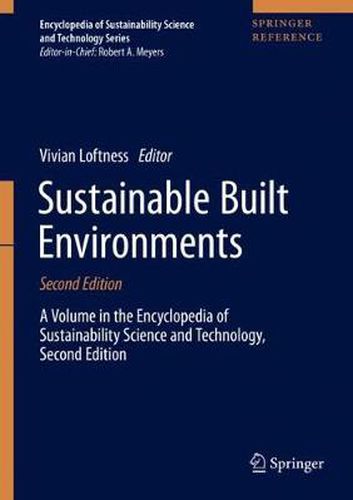Readings Newsletter
Become a Readings Member to make your shopping experience even easier.
Sign in or sign up for free!
You’re not far away from qualifying for FREE standard shipping within Australia
You’ve qualified for FREE standard shipping within Australia
The cart is loading…






This volume in the Encyclopedia of Sustainability Science and Technology, Second Edition, describes the breadth of science and engineering knowledge critical to advancing sustainable built environments, from architecture and design, mechanical engineering, lighting, and materials to water and energy, public policy, and economics. Covering both building, landscape and green infrastructure design and management, detailed consideration is given to how the building sector, the biggest player in the energy use equation, can minimize energy demand while providing measurable gains for productivity, health, and the environment. With a focus on the environmental context, the reader will understand how sustainable design merges the natural, minimum resource conditioning solutions of the past (daylight, solar heat, and natural ventilation) with the innovative technologies including nature-based solutions of the present. The desired result is an integrated intelligent and as socially just as possible system that supports individual control with expert negotiation for resource consciousness.
$9.00 standard shipping within Australia
FREE standard shipping within Australia for orders over $100.00
Express & International shipping calculated at checkout
This volume in the Encyclopedia of Sustainability Science and Technology, Second Edition, describes the breadth of science and engineering knowledge critical to advancing sustainable built environments, from architecture and design, mechanical engineering, lighting, and materials to water and energy, public policy, and economics. Covering both building, landscape and green infrastructure design and management, detailed consideration is given to how the building sector, the biggest player in the energy use equation, can minimize energy demand while providing measurable gains for productivity, health, and the environment. With a focus on the environmental context, the reader will understand how sustainable design merges the natural, minimum resource conditioning solutions of the past (daylight, solar heat, and natural ventilation) with the innovative technologies including nature-based solutions of the present. The desired result is an integrated intelligent and as socially just as possible system that supports individual control with expert negotiation for resource consciousness.